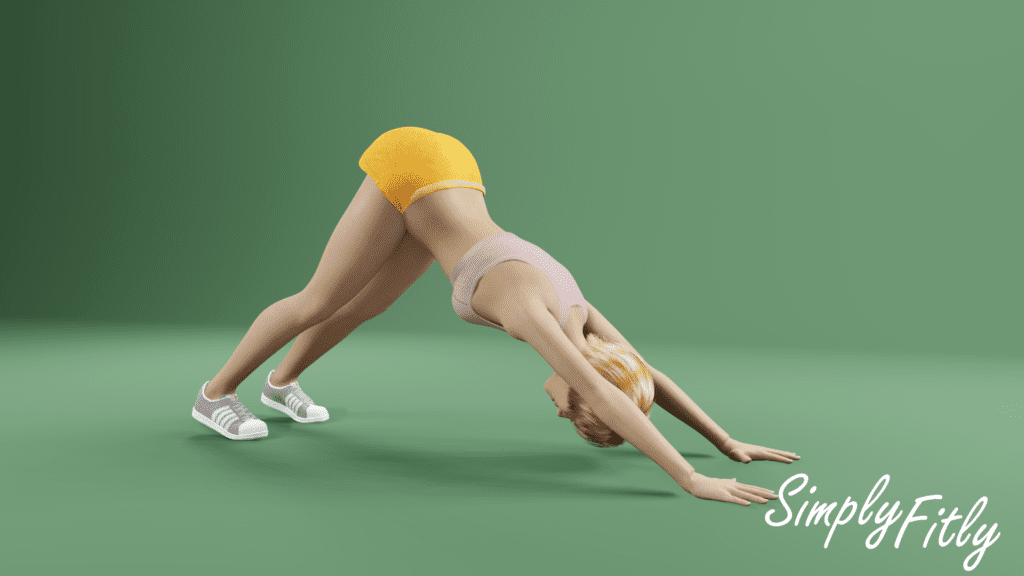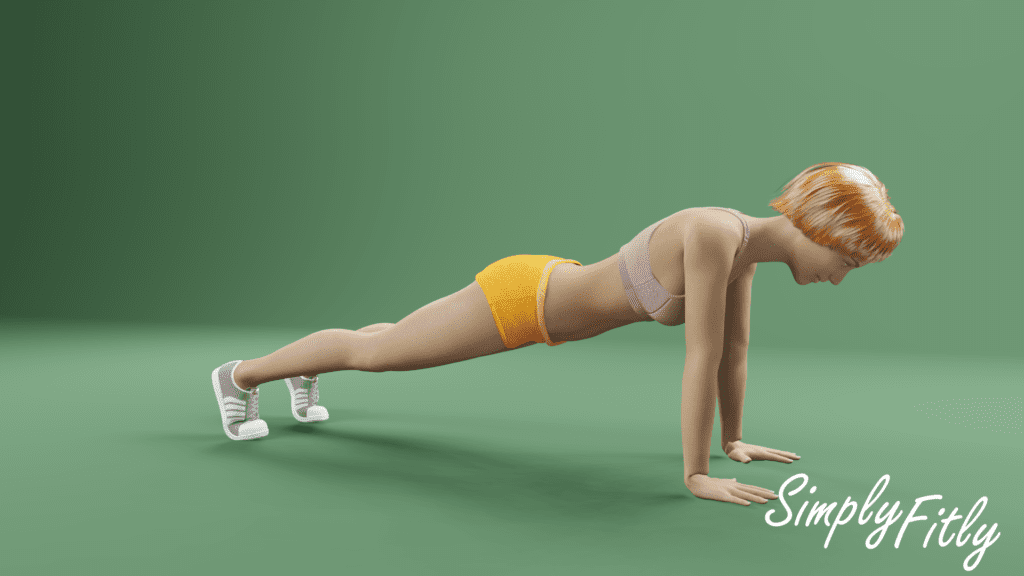
Muscle group: upper body (shoulders, triceps), core, lower body (lower back, hamstrings, calves).
Intensity: moderate.
Directions
- Start in a high plank position with your hands placed directly under your shoulders and your feet hip-width apart.
- Engage your core muscles and keep your body in a straight line from head to heels. Avoid arching or rounding your back.
- From the plank position, lift your hips up and back, pushing your tailbone towards the ceiling.
- As you lift your hips, straighten your legs and push your heels towards the floor. Your body should resemble an inverted V shape. You can modify it by bending your knees slightly or keeping your heels lifted off the floor to reduce the intensity.
- Press your palms firmly into the ground and actively engage your arms and shoulders.
- Hold the Downward Dog position for a moment, feeling the stretch in your hamstrings, calves, and shoulders.
- To return to plank, lower your hips back down and shift your weight forward, coming back to the high plank position.
- Repeat the movement, flowing between plank and Downward Dog smoothly and controlled.


Modifications: you can start by mastering both poses (high plank pose and Downward Dog pose) separately. Also to give yourself a short brake, in the plank position you can lower knees on the ground.
Mistakes
- Arching or rounding the back: Avoid arching or rounding your back during the movement. Focus on keeping your spine in a neutral position, engaging your core to support your lower back.
- Sagging hips in plank: Ensure your hips are in line with your shoulders and heels in the plank position. Avoid sagging or piking the hips.
- Overextending or locking the elbows: Keep a slight bend in your elbows to avoid hyperextension and prevent unnecessary strain on the joints.
- Not engaging the core: Remember to engage your core muscles throughout the movement to maintain stability and control.
- Holding your breath: Breathe steadily and rhythmically throughout the exercise. Inhale as you transition from plank to Downward Dog, and exhale as you return to plank.
- Rushing the movement: Focus on smooth and controlled transitions between plank and Downward Dog. Avoid rushing or jerky movements.
Conclusion
Plank to Downward Dog is a dynamic exercise that combines elements of two classic yoga poses. This movement engages multiple muscle groups and offers a range of benefits.
This exercise engages your core muscles throughout the movement, promoting increased core strength and stability.
The transition from Plank to Downward Dog involves the arms, shoulders, legs, and back, offering a comprehensive full-body workout. Also it requires balance and control, helping improve your overall equilibrium.
The Downward Dog position stretches the hamstrings, calves, and back, enhancing overall flexibility.
Like many yoga-inspired exercises, Plank to Downward Dog encourages mindfulness and breath awareness.
Plank to Downward Dog is a staple in many yoga routines. But you can also include this exercise in a warm-up routine to activate your core and prepare your body for more intense workouts. This exercise will add nice diversity to your full-body workout, HIIT or circuit training as well.